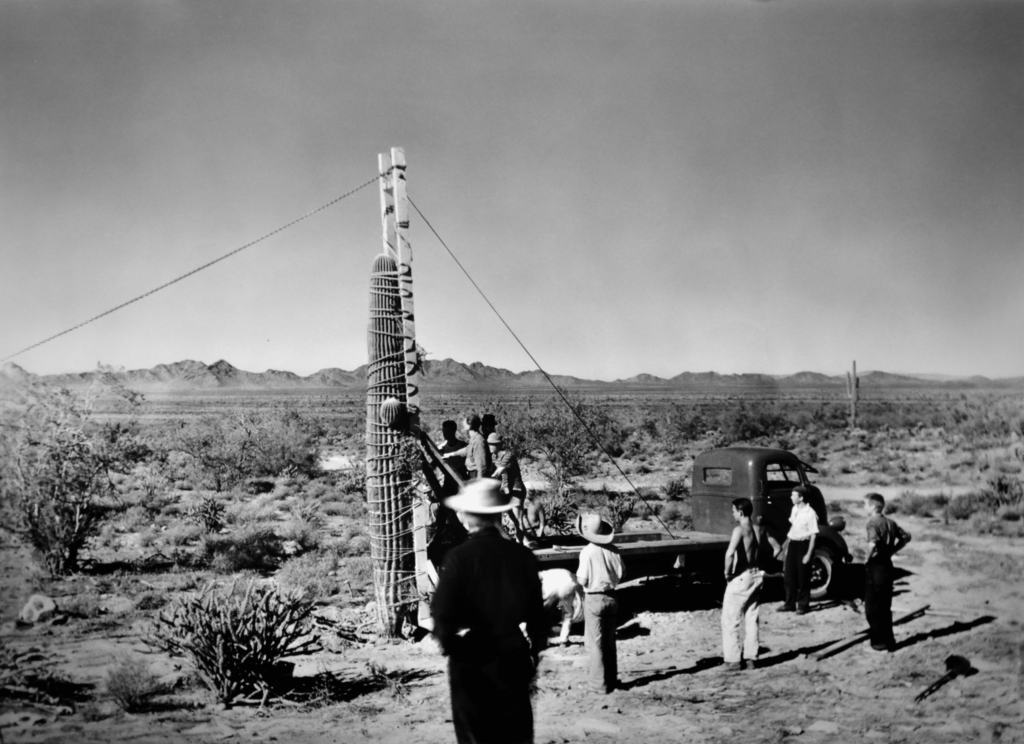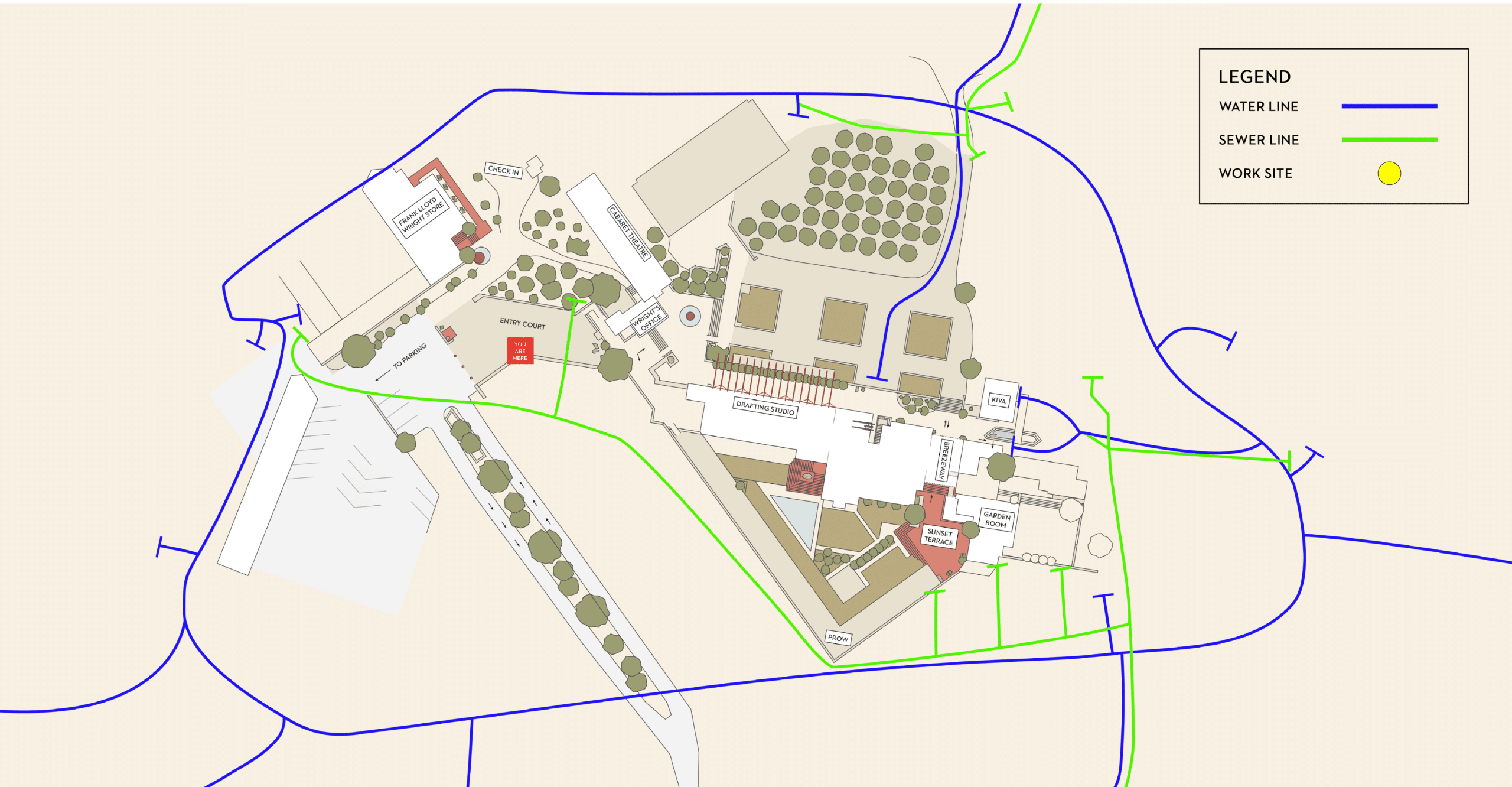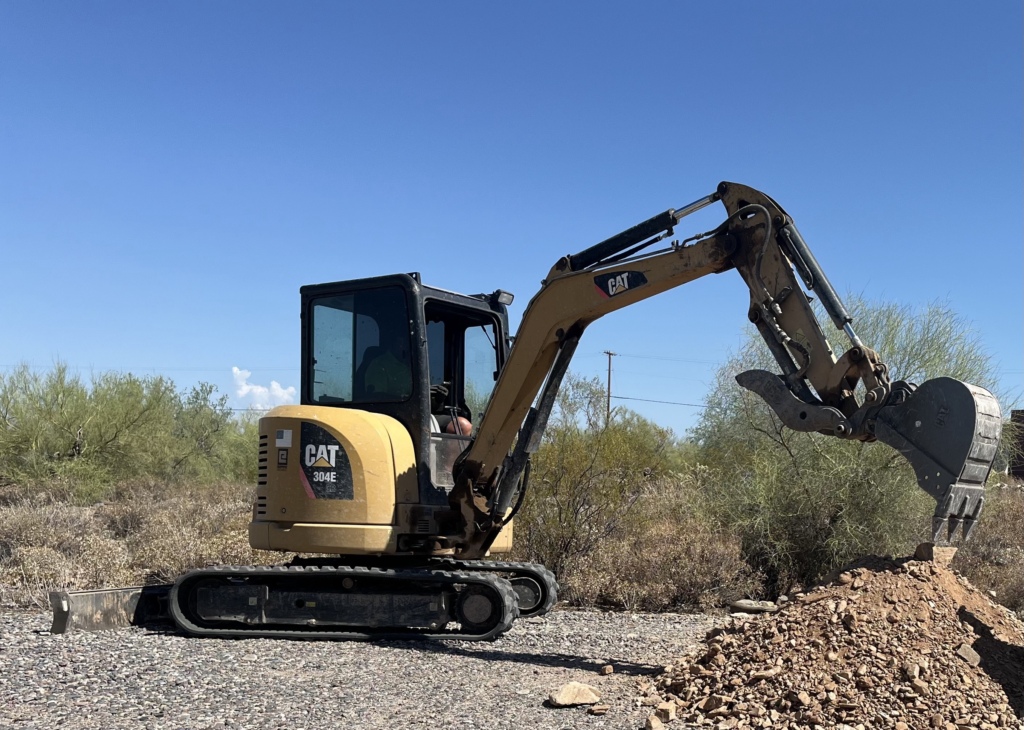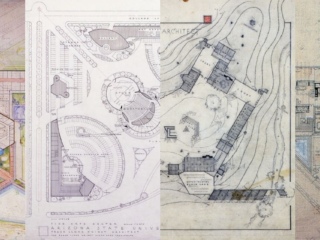From The Ground Up: Infrastructure Upgrades
At Taliesin West Summer, 2023
This summer, we are updating our water and sewer infrastructure at Taliesin West. This project will be the first comprehensive upgrade to the water lines in our 85-year history. As stewards of the property, we’re working to ensure that the site can continue to be enjoyed by visitors, residents, and staff during this time.

DRAFTING ROOM, 1938
The Frank Lloyd Wright Foundation is committed to the ongoing preservation and stewardship of Taliesin West. Sometimes, preservation is highly visible, such as restoring translucent rooftops or wooden beams. Often, preservation is needed in ways that are far less visible – usually for systems that you can’t see but that you rely on while you’re here.
Seven years ago, we began identifying the important preservation work ahead of us.

WRIGHT CAREFULLY RELOCATING A SAGUARO, 1938.
We gathered some of the nation’s leading experts in historic preservation for a summit in October 2016, and reviewed our Taliesin West Preservation Master Plan. During that meeting, it became clear that many of our current utility systems are at the end of their serviceable life and will need replacement in the near future.
We set to work and created comprehensive engineering and construction plans that address four of those areas:
• Water and sewer infrastructure
• Well site
• Wastewater treatment plan
• Septic systems
Now, with the support of the Virginia G. Piper Charitable Trust, SC Johnson, the National Endowment for the Humanities, and other donors, the water and sewer infrastructure project can begin – the first comprehensive upgrade to the lines in our 85-year history.
TIMING
We began building our water and sewer systems – or, infrastructure – at Taliesin West in the late 1930’s. Over the years, the system grew and changed, including repairs when needed. With each repair, new materials and technologies were available. This has left us with a patchwork of materials system-wide, including 11 different kinds of pipes across the site.

SURVEYING AND PLOTTING NATIVE TREES AND CACTI
Most water and sewer infrastructure systems have a lifetime of 40 years. Ours are more than 80 years old – so it’s time for a comprehensive replacement. During this process, we’ll abandon older materials like galvanized steel, cast iron, and Orangeburg, to name a few. Our new water system will have large diameter PVC pipes, and smaller lines made of copper. The new sewer system will be entirely PVC. By replacing piping throughout, we’ll see fewer leaks along the lines, and fewer repairs needed for the next few decades.

MAKING IT HAPPEN
In order to change out our water and sewer infrastructure systems, we will be working for several months around the entire property. The system forms a ring around the center of the site, and lines are run from the ring to the building connection points.
LOCATIONS
In most areas, we’ll be digging trenches to replace the pipes. But in some areas, we can’t do that – it would disturb the historic structures or concrete in a way that can’t be repaired. In those cases, we’ll improve the pipes by adding a Cured-in-Place-Pipe liner, or CIPP. This trenchless restoration technique repairs existing pipes with a textile liner tube and liquid resin. Technologies like this have minimal impact on our historic structures, while maximizing our system’s efficiency and lifespan.

DIGGING ALONG THE SERVICE ROAD
STEWARDS OF THE LAND
Beyond caring for the historic buildings, we are also focused on the stewardship of the surrounding desert. To minimize impact on the fragile ecosystem around Taliesin West, we are taking several precautions, including using the existing service road as a dig site when possible, minimizing impact on large trees and cacti through ground surveys and planning, and acting in accordance with the City of Scottsdale’s Native Plant Ordinance.
This project is made possible through the generous support of donors including:
• The Virginia G. Piper Charitable Trust
• SC Johnson
• National Endowment of the Humanities
• Visitors and Members like you
The Frank Lloyd Wright Foundation inspires people to discover and embrace an architecture for better living through meaningful connections to nature, the arts, and each other.
SUPPORT US TODAY BY VISITING
FRANKLLOYDWRIGHT.ORG/SUPPORT



![[Cohen House Tropical Foliage (Abstract Pattern Study), Eugene Masselink, ca. 1957, graphite, ink, and paint on plywood, Frank Lloyd Wright Foundation Collection, 1910.223.2.]](https://franklloydwright.org/wp-content/uploads/2024/04/1910.223.2-2-a-320x240.png)
